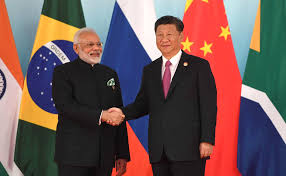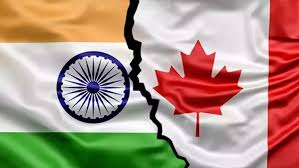In a significant diplomatic development, Indian Prime Minister Narendra Modi and Chinese President Xi Jinping engaged in their first formal talks in five years, marking a potential turning point in the complex relationship between the two Asian giants. The discussions signal a desire to move beyond the tensions stemming from the deadly military clash in 2020 and restore a sense of stability and cooperation.
The meeting, held recently, reflects both leaders’ commitment to enhancing ties through dialogue and mutual respect. According to Foreign Secretary Vikram Misri, Modi and Xi emphasized the importance of maturity and wisdom in navigating their relationship, indicating a shift towards a more constructive approach. This change is vital, considering that both nations are not only nuclear powers but also represent the world’s most populous countries, making their relationship significant on a global scale.
Context of the Meeting
The backdrop to this meeting is a complicated history marked by conflict and competition. The 2020 military clash in Ladakh, which resulted in the deaths of 20 Indian soldiers and four Chinese troops, severely strained relations between the two nations. Since then, both countries have ramped up military presence along their contested borders, a move that has raised alarms in the region and beyond. Tens of thousands of troops and significant military hardware have been deployed by both sides, underscoring the need for diplomatic solutions.
Despite the ongoing tensions, Modi and Xi’s recent talks reflect a thawing of relations. Misri noted that both leaders welcomed recent border agreements and the ongoing dialogues that have occurred in the weeks leading up to this meeting. This development hints at a willingness to address long-standing issues and find common ground, a crucial step for both countries aiming for stability.
Key Takeaways from the Talks
During the discussions, PM Modi reiterated the necessity of not allowing boundary disputes to disrupt peace and tranquility along the borders. Both leaders acknowledged the critical role of special representatives in resolving boundary issues, indicating that they are committed to establishing a framework for ongoing dialogue. This commitment is essential for managing not just bilateral relations but also for fostering regional peace and stability.
One notable aspect of the talks was the emphasis on the potential positive impact of a stable bilateral relationship on global peace and prosperity. With the world currently facing numerous geopolitical challenges, a cooperative India-China relationship could help foster a more stable environment in Asia and beyond.
The Road Ahead: Challenges and Opportunities
While the recent talks are a promising sign, significant challenges remain. The Ladakh clash has left deep scars, and both nations have become increasingly cautious in their dealings with each other. Diplomatic efforts have intensified in recent months, especially after foreign ministers from both countries met in July, agreeing to enhance talks aimed at easing border tensions. This renewed focus on diplomacy may lead to a more sustained engagement, although skepticism remains regarding the implementation of agreements reached.
Another crucial aspect of the relationship is economic cooperation. India has taken a more scrutinizing approach to Chinese investments since the 2020 clashes, blocking direct flights and limiting visas for Chinese nationals. As Modi and Xi strive to improve political ties, there is hope that these economic measures will gradually ease, leading to increased Chinese investment in India. Such investment could provide significant economic benefits, especially in technology and infrastructure sectors.
Regional Implications
The evolving relationship between India and China is not just a bilateral issue; it has significant implications for the broader region. Both nations are key players in Asian geopolitics, and their cooperation—or lack thereof—can influence stability in South Asia and beyond. A thaw in relations could foster a more collaborative approach to regional challenges, such as climate change, trade, and security.
Conversely, continued tensions could exacerbate regional rivalries, particularly with nations like Pakistan and in the context of the United States’ strategic interests in the region. As both countries navigate their relationship, the potential for collaboration on common challenges remains significant.
The recent talks between PM Modi and President Xi represent a crucial step towards rebuilding the India-China relationship after years of tension. While challenges remain, the commitment to dialogue and mutual respect could pave the way for a more stable and prosperous future for both nations. As the world’s two most populous countries strive to find common ground, the potential for improved bilateral relations could have far-reaching implications, not just for Asia but for global geopolitics as a whole.
Both leaders have indicated a willingness to work together, highlighting that their mature approach could lead to peaceful and stable ties. As India and China continue to navigate the complexities of their relationship, the focus on diplomacy and cooperation will be essential for achieving lasting peace and prosperity in the region.




